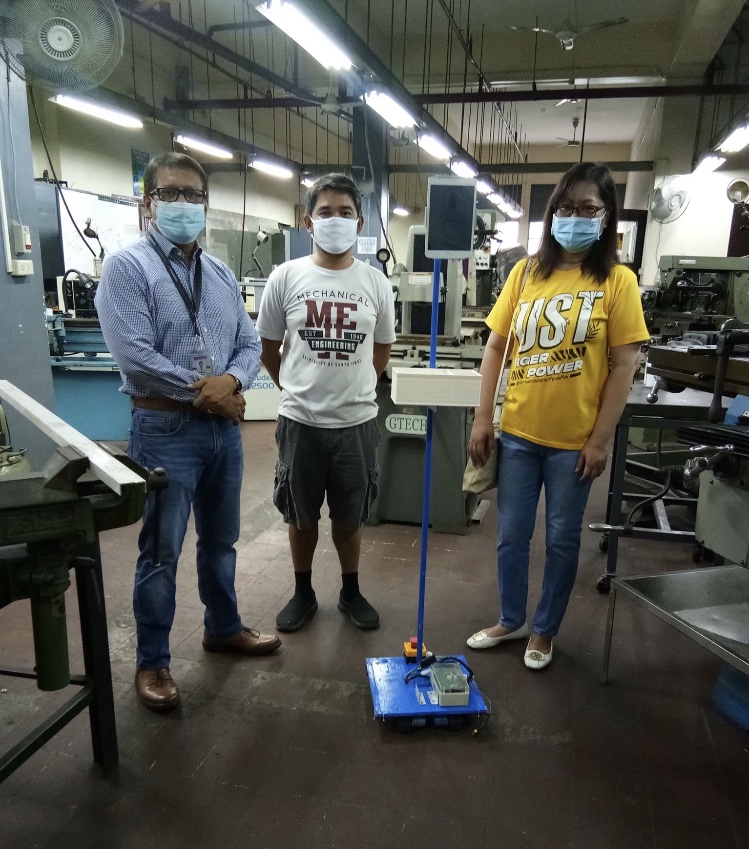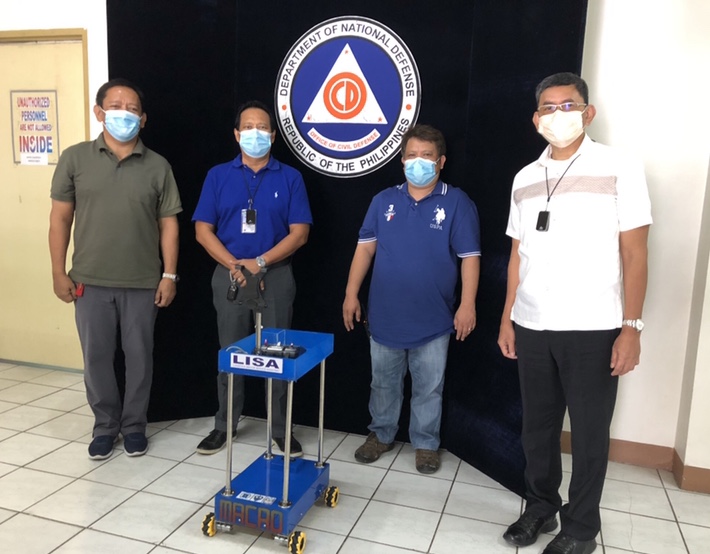Civil Engineer-businessman Jerenato (Jerry) Alfante is adding more Logistic Indoor Service Assistant (LISA) telepresence robots in hospitals to help protect medical frontliners by producing them in his own company. Upon the invitation of Dean Philipina A. Marcelo, Ph.D., of the Faculty of Engineering, he visited the University of Santo Tomas in April 2020, at the height of the COVID pandemic. He saw the initial LISA robot that was invented for hospital use by faculty member Anthony James Bautista, Ph.D., a Mechanical Engineer.
With Bautista’s expertise in robotics, producing LISA robots has become a project of the Faculty in response to the COVID pandemic. Its objective is to minimize face-to-face interaction between the medical practitioner and the patient, thereby protecting the medical frontliners.
Alfante, who graduated in 1984, is president and CEO of Macro Wiring Technologies, Co. Inc. Having been president of the UST Engineering Alumni Association, he saw his possible role in the undertaking.
However, Alfante was aware of these two realities: the logistics needed to produce more robots, and the speed of the spread of the virus as shown by rising cases being reported daily by the Department of Health. This means that more frontliners will have to deal with more patients, but at the same time, they also have to be protected from COVID. He is no stranger to frontliners’ needs having a nurse for a daughter, Kathleen, the Nursing Director at a health facility in California, USA.
Using his personal funds, this socio-civic oriented Thomasian took on to research, after being given Bautista’s nod to innovate its original design. Alfante designed his version of the LISA robots depending on the function needed by its recipient hospitals.
The first LISA robots that were produced by the Faculty of Engineering were given to the UST Hospital and a hospital in Pasig, and then after that, the project received a grant from the Department of Science and Technology.
The original specifications of the robot designed by Bautista included the following features: one speed, and operated on 6V battery/6 V motors. Alfante’s innovation resulted in a two-speed robot with High and Low options running on 12V battery/ 12V motors. With a 12 V battery, the robot could run for as long as 20 hours. Instead of a tablet, he decided to use an Android phone because it is capable of a louder sound. He also added a cable from the unit to the cellphone. It weighs six kilos without a battery.
Now with 20 LISA robots produced in his factory located at the Cavite Economic Zone, Alfante, who quickly adds that he used his personal funds to finance the production of these robots, was able to donate them to the following hospitals: V. Luna Medical Center, Quezon City (two units); Office of Civil Defense (OCD), COVID Facility Camp Aguinaldo, Quezon City (one unit) and one unit Food Tray Robot that can bring as many as ten trays at a time; Santo Nino Hospital, Baguio City, (four units); Pampanga Medical Specialist Hospital, Pampanga, (one unit); Sarangani Bay Specialist Medical Center, General Santos City (one unit); and Chinese General Hospital, Manila (one unit). Deliveries were made between June to September.
There are also LISA robots that are scheduled to be delivered to hospitals in the south and in the United States pending availability of flight schedules to Butuan Medical Center, Butuan City (two units); Agusan Del Norte Provincial Hospital, Agusan del Norte (one unit); Democrito O. Plaza Memorial Hospital, Agusan del Sur (one unit); and Jurupa Hills Post Acute Nursing Home, California, USA (two units).
Alfante’s advocacy to provide protection to medical frontliners has now reached even the farthest provinces in the country, particularly in Mindanao. He has no plans yet to stop this humanitarian act. This Thomasian has indeed extended the efforts of his alma mater to send the message to the medical frontliners that the University is one with them in the fight against COVID.






